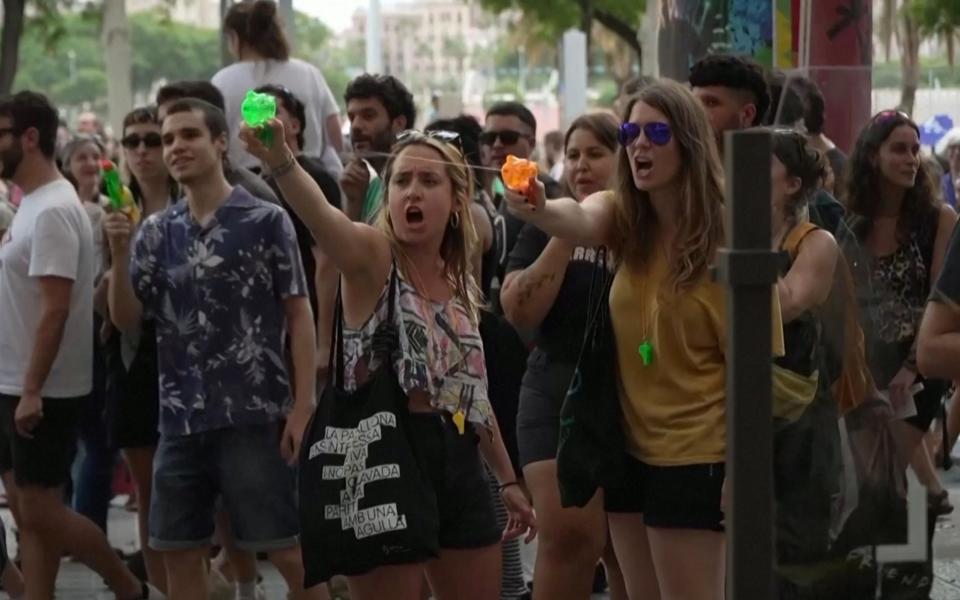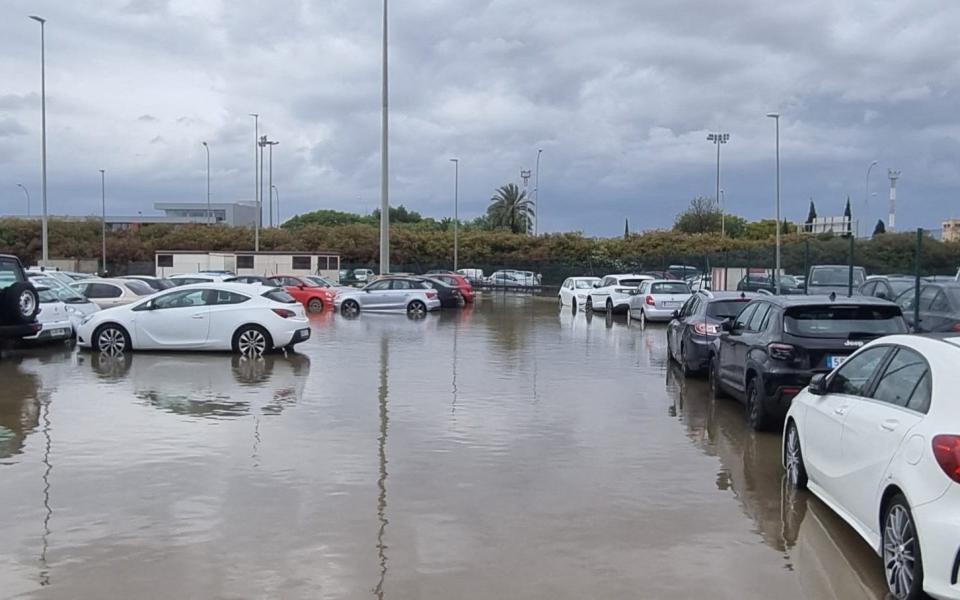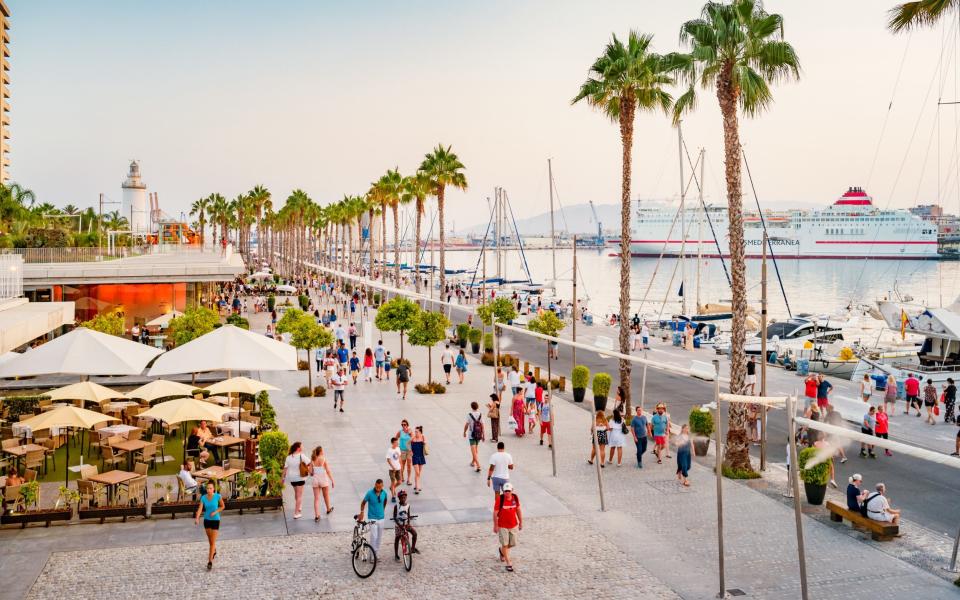Droughts, biblical floods, rising temperatures and angry anti-tourism protesters waving “tourists go home” placards are just some of the scenarios that Spain’s most popular tourist destinations have experienced in recent months.
How do you prevent your relaxing summer holiday from turning into a real holiday hell?
Spain is not necessarily anti-tourism. Tourism accounts for about 13 percent of Spain’s GDP, and local businesspeople and politicians alike are keen to stress that visitors Are welcome.
Even many protesters say they value tourism — they just want tourists to visit in a responsible and sustainable way. That means visiting small businesses, staying in local hotels, and getting off the beaten track, away from tourist hotspots.
Below I have highlighted the issues that could affect holidays in some of the major destinations in Spain and suggested ways in which tourists can reduce their impact.
1. Barcelona: Airbnb bans and higher tourist taxes
In early July, tourists on Barcelona’s La Rambla were sprayed with water by protesters taking part in an anti-tourism demonstration, just one of many that have plagued the Catalan capital since January. Why the anger? Locals blame unmanageable tourism, particularly in the city center, for soaring property prices. Chronic water shortages, caused by climate-change-induced droughts, have also been exacerbated by the large numbers of visitors. (Barcelona City Hall estimates that tourists use almost twice as much water per day as locals.)

The city council is well aware of these issues and, in order to tackle the housing crisis, Mayor Jaume Collboni has announced plans to ban short-term holiday rentals (such as Airbnb) from 2028. The daily tourist tax for hotel guests will also increase in October, from the current €3.35 (£2.74) to €4 (£3.37) per night for the first seven days of your stay.
So how can you enjoy the city while addressing the protesters’ concerns? Avoid the already overcrowded city centre and explore fascinating neighbourhoods such as Eixample, Gracia and Poble Nou. Or take the train to the coastal towns outside the city.
2. Mallorca: Protests and restrictions on alcohol
In June, heavy rain caused chaos at Palma airport, flooding the runway and causing water to pour from the airport ceiling. Elsewhere in Spain, torrential rain turned the streets of Murcia and Alicante into raging rivers. Both scenarios occurred after severe flooding in Seville in February.
In June, some 10,000 disgruntled, placard-waving residents took to the streets and beaches of Mallorca in one of Spain’s largest anti-tourism demonstrations. A smaller demonstration was also held in neighbouring Menorca, and another protest is planned in Mallorca’s capital, Palma, for the evening of 21 July.


As in Barcelona, much of the local resentment stems from holiday rentals, as well as the behaviour of tourists in some of the noisier resorts. The local government has already introduced new fines and restrictions to curb alcohol-fuelled tourism, and there is also consideration of banning cruise ships from docking in Palma.
Jaume Bauzà, Minister of Tourism, Culture and Sport for the Balearic Government, told The Telegraph: “All tourists are welcome and will continue to be so. All we ask of visitors is respect and responsibility. [We need] a more sustainable and environmentally friendly [tourism] sector, which attracts responsible visitors who care for their environment.”
3. Ibiza: demonstrations and heat waves
As with much of southern Europe, Spain’s Meteorological Agency AEMET has forecast a warmer than normal summer this year in the country’s Mediterranean region, as well as the Balearic and Canary Islands. So if you’ve made a booking or are thinking about heading to Ibiza’s famously laid-back, powdery beaches or lush interior, bear this in mind.
Ibiza has also seen its own anti-tourism demonstrations, with around 1,000 protesters taking to the streets in late May. Once again, they are at odds with the housing crisis and the behaviour of the island’s party tourists. “Tourism yes, but not like this,” some of the posters read.
The problem is exacerbated by the large number of tourists visiting the island compared to its small population: in 2023, more than 3.5 million people visited Ibiza and neighbouring Formentera, while the total population of the islands is only 160,000.
What can you do? Be prepared for high temperatures and avoid larger hotel chains in favor of local businesses. Where possible, get away from tourist hotspots.
4. Malaga: anger over cruise ships
In the Andalusian city of Málaga, residents have also taken to the streets. In July, more than 5,000 people demonstrated, carrying banners with slogans such as “Malaga to live, not to survive” and “€1,300 salary, €1,100 rent – how can you live?”
Once seen as the gateway to the Costa del Sol, Malaga has recently become a city break destination thanks to its Picasso Museum and beautiful beaches. But that comes at a price.


Like Barcelona, cruise ships are flooding the city centre with short-stay tourists who provide little benefit to the city’s economy, while the streets are becoming even more crowded. Meanwhile, Málaga (both city and province) has the highest number of tourist rentals in Spain, according to the National Statistics Institute, leading frustrated locals to plaster their holiday homes with stickers reading “Tourists, go home” or “This used to be my home”.
The solution? As elsewhere, responsible and sustainable travel is key. Pablo Carrington, founder and CEO of Marugal Hotel Management, which runs the Palacio Solecio hotel in Malaga, told The Telegraph: “These protests are not about hatred towards tourists, because we are all aware of the value this industry brings to the city. The protests are about the need to rethink the type of tourists we want to visit our cities.”
5. The Canary Islands: hunger strikes and water shortages
In April, some 200,000 people took to the streets of Tenerife’s capital, Santa Cruz, in what amounted to the largest demonstration in the island’s history. A month later, six activists went on a 20-day hunger strike to demand sustainable tourism instead of mass tourism, citing a lack of affordable housing, pollution and water shortages. They also attempted to block new tourism plans, including the construction of a five-star hotel on one of Tenerife’s last unspoilt beaches.
It’s not just about housing and overcrowding in cities, though. Locals, as in other parts of Spain, are fed up with tourists behaving badly. “Closed to tourists” signs have been seen on beaches, and elsewhere tourists have infuriated themselves by using camping stoves in Teide National Park and leaving their cars in designated areas in the park.
So should you still think about coming? Yes, absolutely. Tenerife’s tourism authority told The Telegraph: “Tourists are very welcome in Tenerife. Tenerife’s strategy is to put sustainability first, not just environmentally, but also economically and socially. We encourage visitors to explore the lesser-known parts of our island, which will benefit all areas economically.”